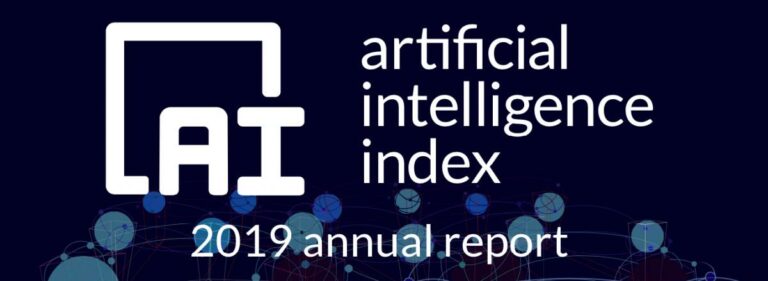
Saurabh Mishra
Founder and CEO - Taiyō.AI
Saurabh is the Founder and CEO of Taiyō.AI, leading the evolution in the global construction, infrastructure, and government spending sectors by introducing a novel data and AI platform designed to streamline efficiency and improve outcomes.
Dr. Mishra’s career has spanned diverse roles that integrate research, teaching, policy with a focus on AI, AI policy, megaprojects, risk management, and decision-making. His research is focused on a systems architecture approach to Artificial Intelligence (AI) and how such systems can help humans make more sustainable investment and policy decisions. Previously, he served as the Director of the AI Index at the Stanford University’s Institute for Human-Centered Artificial Intelligence (HAI). He has taught various business and policy programs including at UC Berkeley, University of San Francisco. Prior to these roles, he served at the World Bank, International Monetary Fund (IMF), and the International Finance Corporation (IFC) leading key projects in emerging markets and leading economic research exploring topics of economic growth, technology, inequality, economic development.
He currently serves as a Visiting Fellow at the Bank for International Settlements (BIS), non-resident fellow at the Brookings Institution, OECD.AI member of AI experts. He received a PhD in Reliability Engineering from the Clark School of Engineering at the University of Maryland, College Park.
Dr. Mishra’s research has been published in various journals including Scientific Reports – Nature, Journal of Risk Analysis, Journal of Service Research, Journal of International Money and Finance, Open Economies Review, Structural Change and Economic Dynamics, books by Oxford University Press, as well as numerous World Bank and IMF Policy Papers. He’s a frequent keynote speaker and guest lecturer at business, policy, and academic forums.
Saurabh Mishra's publications
Saurabh Mishra's documents
Academia
AI Index Report 2019 – Chapter 7 Public Perception
This chapter presents trends in public awareness of AI by tracking the AI mentions in public domains such as communications of central banks, parliament sessions in select countries and earning calls of publicly-traded companies in US.— July 7, 2020
Academia
AI Index Report 2019 – Chapter 6 Autonomous Systems
AI is a key component of Autonomous Systems. This chapter presents data on Autonomous Systems divided in two sections: Autonomous Vehicles (AV’s) and Autonomous Weapons (AW’s). The AV section shows the countries and cities testing AV’s. This is followed by US state policy on AV from the National Conference on State Legislation (NCSL). The section on AW presents the known types of autonomous weapon deployments and by which country based on expert survey data collected by the Stockholm International Peace Research Institute (SIPRI).— July 7, 2020
Academia
AI Index Report 2019 – Chapter 5 Education
This chapter presents trends in AI education from a variety of data sources, starting first with global data from Coursera and Udacity ML and AI training courses. Second, trends in undergraduate enrollment in introductory ML and AI courses are presented for the US and international universities. Third, trends in PhD hires on industry hiring, faculty hiring and faculty departures are presented based on the Taulbee Survey and Goffman and Jin (2019). Fourth, trends in gender and international diversity for AI PhDs are presented, along with faculty diversity across select university departments. — July 7, 2020
Academia
AI Index Report 2019 – Chapter 4 The Economy
This chapter is broken into three sections: Jobs, Investment Activity, and Corporate Activity. The first section on AI Jobs shows data relating to AI jobs, hiring, and skill levels around the globe as well as in US regions. The section concludes with trends in skill penetration and labor demand for AI jobs from a sub-regional US perspective. The second section on Investment presents startup investment trends for the world, by countries, and by sectors. The third section on Corporate Activity includes data on adoption of AI capabilities in industry, drawing from McKinsey’s Global AI survey. — July 7, 2020
AI Index Report 2019 – Chapter 3 Technical Performance
The technical performance chapter tracks technical progress in tasks across Computer Vision (Images, Videos, and Image+Language), Natural Language, potential limitations (Omniglot Challenge), and trends in computational capabilities.— July 7, 2020
Academia
AI Index Report 2019 – Chapter 1 Research and Development
This chapter presents bibliometrics data, Github Stars for key AI software libraries and discusses societal and gender diversity of AI researchers.— July 7, 2020
Academia
AI Index Report 2019 – Chapter 2 Conferences
This chapter presents data on AI conference attendance and summary of topics and policy milestones achieved. — July 6, 2020
Academia
AI Index Report 2019 – Chapter 8 Societal Considerations
This chapter discusses AI ethical challenges; key topics in global news on AI and Ethics; and AI use cases supporting each the UN SDGs.— June 30, 2020
AI Index Report 2021 Chapter 7
This chapter navigates the landscape of AI policymaking and tracks efforts taking place on the local, national, and international levels to help promote and govern AI technologies. It begins with an overview of national and regional AI strategies and then reviews activities on the intergovernmental level. The chapter then takes a closer look at public investment in AI in the United States as well as how legislative bodies, central banks, and nongovernmental organizations are responding to the growing need to institute a policy framework for AI technologies.— March 15, 2021
AI Index Report 2021 Chapter 6
This chapter presents diversity statistics within the AI workforce and academia. It draws on collaborations with various organizations—in particular, Women in Machine Learning (WiML), Black in AI (BAI), and Queer in AI (QAI)— each of which aims to improve diversity in some dimension in the field. The data is neither comprehensive nor conclusive. In preparing this chapter, the AI Index team encountered significant challenges as a result of the sparsity of publicly available demographic data. The lack of publicly available demographic data limits the degree to which statistical analyses can assess the impact of the lack of diversity in the AI workforce on society as well as broader technology development. The diversity issue in AI is well known, and making more data available from both academia and industry is essential to measuring the scale of the problem and addressing it.— March 15, 2021
AI Index Report 2021 Chapter 5
This chapter tackles the efforts to address the ethical issues that have arisen alongside the rise of AI applications. It first looks at the recent proliferation of documents charting AI principles and frameworks, as well as how the media covers AI-related ethical issues. It then follows with a review of ethics-related research presented at AI conferences and what kind of ethics courses are being offered by computer science (CS) departments at universities around the world.— March 15, 2021
AI Index Report 2021 Chapter 4
This chapter focuses on trends in the skills and training of AI talent through various education platforms and institutions. What follows is an examination of data from an AI Index survey on the state of AI education in higher education institutions, along with a discussion on computer science (CS) undergraduate graduates and PhD graduates who specialized in AI-related disciplines, based on the annual Computing Research Association (CRA) Taulbee Survey. The final section explores trends in AI education in Europe, drawing on statistics from the Joint Research Centre (JRC) at the European Commission.— March 15, 2021
AI Index Report 2021 Chapter 3
This chapter looks at the increasingly intertwined relationship between AI and the global economy from the perspective of jobs, investment, and corporate activity. It first analyzes the worldwide demand for AI talent using data on hiring rates and skill penetration rates from LinkedIn as well as AI job postings from Burning Glass Technologies. It then looks at trends in private AI investment using statistics from S&P Capital IQ (CapIQ), Crunchbase, and Quid. The third, final section analyzes trends in the adoption of AI capabilities across companies, trends in robot installations across countries, and mentions of AI in corporate earnings, drawing from McKinsey’s Global Survey on AI, the International Federation of Robotics (IFR), and Prattle, respectively.— March 15, 2021
AI Index Report 2021 Chapter 2
This chapter highlights the technical progress in various subfields of AI, including computer vision, language, speech, concept learning, and theorem proving. It uses a combination of quantitative measurements, such as common benchmarks and prize challenges, and qualitative insights from academic papers to showcase the developments in state-of-the-art AI technologies.— March 15, 2021
Academia
AI Index Report 2021 Chapter 1
This chapter begins by examining AI publications—from peer-reviewed journal articles to conference papers and patents, including the citation impact of each, using data from the Elsevier/Scopus and Microsoft Academic Graph (MAG) databases, as well as data from the arXiv paper preprint repository and Nesta. It examines contributions to AI R&D from major AI entities and geographic regions and considers how those contributions are shaping the field. The second and third sections discuss R&D activities at major AI conferences and on GitHub.— March 15, 2021
AI Index Report 2021
The AI Index Report tracks, collates, distills, and visualizes data related to artificial intelligence. Its mission is to provide unbiased, rigorously vetted, and globally sourced data for policymakers, researchers, executives, journalists, and the general public to develop intuitions about the complex field of AI. The report aims to be the world’s most credible and authoritative source for data and insights about AI. This year we significantly expanded the amount of data available in the report, worked with a broader set of external organizations to calibrate our data, and deepened our connections with Stanford’s Institute for Human-Centered Artificial Intelligence (HAI).— March 15, 2021
Academia
AI Index Report 2019 – Chapter 7 Public Perception
This chapter presents trends in public awareness of AI by tracking the AI mentions in public domains such as communications of central banks, parliament sessions in select countries and earning calls of publicly-traded companies in US.— July 7, 2020
Academia
AI Index Report 2019 – Chapter 6 Autonomous Systems
AI is a key component of Autonomous Systems. This chapter presents data on Autonomous Systems divided in two sections: Autonomous Vehicles (AV’s) and Autonomous Weapons (AW’s). The AV section shows the countries and cities testing AV’s. This is followed by US state policy on AV from the National Conference on State Legislation (NCSL). The section on AW presents the known types of autonomous weapon deployments and by which country based on expert survey data collected by the Stockholm International Peace Research Institute (SIPRI).— July 7, 2020
Disclaimer: The opinions expressed and arguments employed herein are solely those of the authors and do not necessarily reflect the official views of the OECD, the GPAI or their member countries. The Organisation cannot be held responsible for possible violations of copyright resulting from the posting of any written material on this website/blog.



























